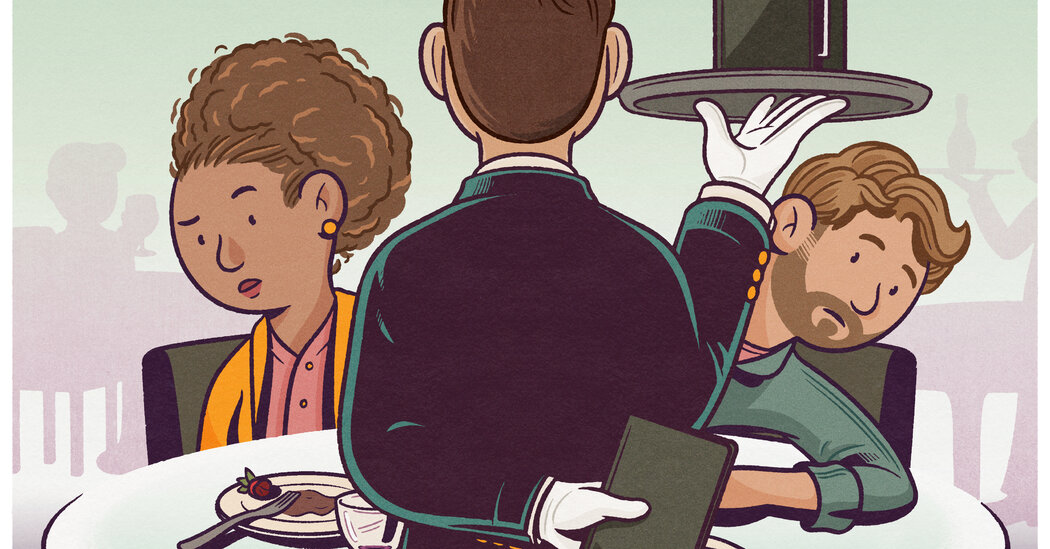
Last year, when food prices rose along with so many other costs, José Theoktisto began to think about how to lower operating expenses at the Venezuelan restaurant he runs in upstate New York. He worked with different suppliers, and he raised menu prices. Then he took a closer look at his statements and found that he was paying $2,000 a month in credit card fees.
“They pile fees on top of fees, on top of fees,” Mr. Theoktisto said about credit card processing companies. He said that he normally pays 4 percent per transaction when someone uses an electronic payment method, but that he also has to cover other charges related to credit cards, like a fee for when a customer uses a card from another country.
In January, he decided that instead of raising prices, he would add a 4 percent convenience fee to the bills of customers who pay by credit card. He is just one of an increasing number of restaurant owners adopting these policies as inflation cuts into his bottom line and credit card fees rise.
Mr. Theoktisto said that since he and his wife opened Oh Corn! Arepas about seven years ago near Troy, N.Y., the number of customers using electronic payments has increased from 50 percent to 90 percent. He is not alone.
“No one’s using cash,” said John Horne, the owner of Café L’Europe and several locations of the Anna Maria Oyster Bar in Sarasota, Fla. He said he has paid about $279,000 in credit card fees this year among his six restaurants, and is thinking about adding a broader service fee. “It is increasing the cost of doing business in every industry. And the consumer doesn’t realize it.”
For many diners, though, the restaurant check is starting to resemble a CVS receipt. The credit card fee charge can come on top of the tip and various service charges that many restaurants now impose on customers. Michael Thompson, who owns a restaurant, a food truck and a truck stop in Klamath Falls, Ore., said he recently ate with his wife at a Mexican restaurant downtown and found a 3.8 percent credit card fee on his bill.
“It really bothered me,” Mr. Thompson said. “I’ll never go back.” He said he’d never charge these fees at his establishments.
In 2021, Iris Rodriguez noticed the credit card fee increases when she reopened her Puerto Rican seafood restaurant, CostaMar, in Killeen, Texas, after closing it down during the pandemic. In April, she realized she was paying about $400 more each month for electronic payment charges. It was getting more difficult for her to make a profit. In May, she added a nearly 4 percent convenience fee for customers paying with a card.
“We’re being crushed with everything,” Ms. Rodriguez said, adding that she had absorbed the card-company fees before the pandemic because they were more manageable and because food costs were lower.
Restaurants are known to have very small profit margins, about 3 to 5 percent, said Sean Kennedy, the executive vice president of public affairs at the National Restaurant Association, an organization that lobbies on behalf of restaurant owners.
Inflation has made it difficult for restaurants to manage their costs, and they can risk losing customers if they raise prices, Mr. Kennedy said. The association has found that credit card fees are the third-highest expense for restaurants, behind food and labor costs. Owners have also lost the ability to negotiate their rates with credit card companies, he said, because Visa and Mastercard control about 80 percent of the market, and fees continue to increase.
“It’s a perfect storm affecting an industry that’s barely profitable on a good day,” Mr. Kennedy said. “At the end of the day, these surcharges are not about greed, they’re about survival for restaurant owners.”
The association supports the Credit Card Competition Act, a bill introduced in June by Senator Richard J. Durbin of Illinois that would require banks to work with smaller networks, other than Visa and Mastercard, to process these fees. Merchants would then have the option to pick a network with a smaller fee, which could then drive down such charges as more competition is inserted into the market, according to aides from Senator Durbin’s office.
Restaurants who work with a credit card processing company typically receive a point-of-sale system and terminal, which manages their reservations and online orders. This allows restaurant owners to expand their business, said Jeffrey Tassey, the chairman of the Electronic Payments Coalition, an organization that represents major credit card companies.
He said there are more costs associated with accepting cash, like the workers who have to count it and give change. He also encouraged restaurateurs to shop around for the best rates if they felt they were paying too much.
Even though Amy Warner pays 8.5 percent per credit card transaction for the customers at the Trempealeau Hotel in Trempealeau, Wis., she said she worries about having to close her business for days to switch the processing system she has had for about 20 years so that she could obtain a lower rate. She was shocked when her July statement showed that she had paid more than $6,000 in credit card fees.
This month, she plans to add a 5 percent convenience fee because she can no longer raise the prices on her restaurant’s farm-to-table menu. She doesn’t want to price out the locals.
“I could have a full member on salary with insurance benefits on staff with what I’m paying in these fees,” she said. “It kills you.”



